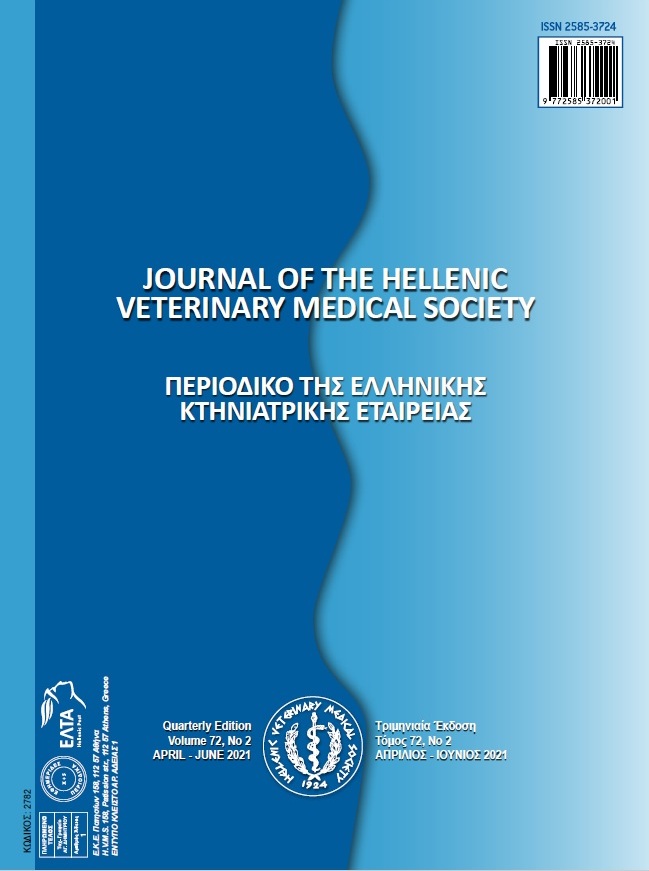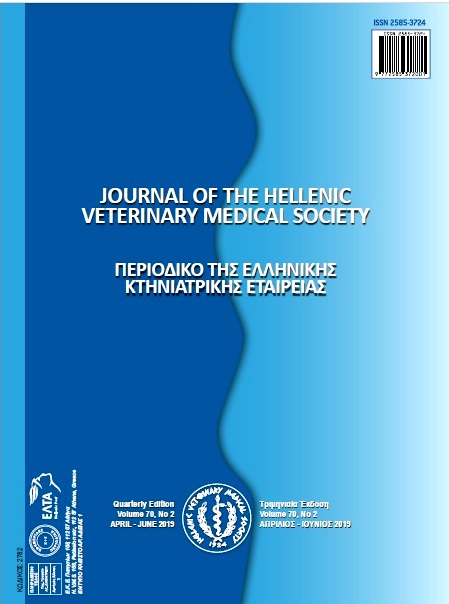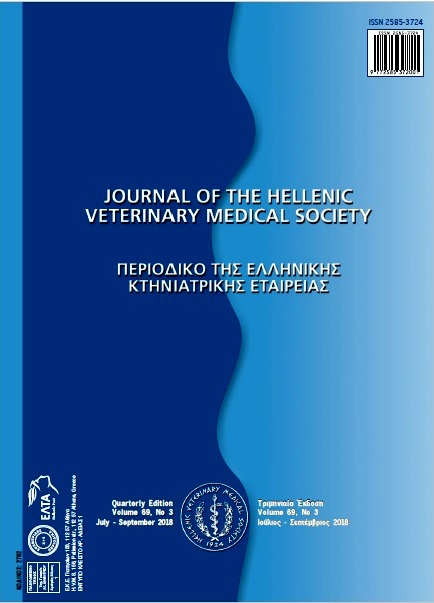Acute non-compressive nucleus pulposus extrusion in dogs and cats: An overview

Abstract
Acute non-compressive nucleus pulposus extrusion (ANNPE) is a common neurologic emergency and is characterized by a sudden extrusion of hydrated nondegenerated nucleus pulposus without or with minimal remaining spinal cord compression. It causes primarily spinal cord contusion and is often the consequence of intensive exercise or trauma. It is accompanied by a peracute onset and often but not always, by lateralization of spinal cord dysfunction. The T3-L3 spinal cord segments are mostly affected, resulting in paraparesis or paraplegia. Urinary and fecal incontinence can also be present. Neurologic manifestations do not deteriorate after the first 24 hours and then there is a progressive improvement or they remain static; that depends on the severity of the spinal cord injury. It has been mainly diagnosed in older non-chondrodystrophic large breed dogs, mostly in males but any sex and canine breed can be affected. On rare occasions cats can be affected as well. It concerns usually middle-aged, non-purebred and mostly male cats, that have experienced external spinal trauma. The onset is also peracute, spinal pain can be evident and the T3-L3 spinal cord segments are mostly affected, resulting in non-progressive paraparesis or paraplegia. Urinary and fecal incontinence are also possible. The diagnostic procedure and the treatment are similar in dogs and cats. The diagnosis is usually presumptive and is based on the medical history, the clinical presentation and the magnetic resonance (MRI) findings, which is the diagnostic modality of choice. There are several MRI criteria such as: an hyperintense lesion overlying an intervertebral disk, reduced volume of nucleus pulposus, extradural material or signal change and intervertebral disk space narrowing in T2 weighted images, that helps us to differentiate ANNPE from other myelopathies. The extruded nucleus pulposus can, rarely have an intradural, extra-/intramedullary detection. The ANNPE should be differentiated from other causes of acute myelopathy such as: ischemic myelopathy and fibrocartilagenous embolism, Hansen type I intervertebral disc disease (the compressive or the non-compressive type), vertebral fracture/luxation. Aortic thromboembolism, ischaemic myelopathy, fibrocartilaginous embolism, intervertebral disc extrusion, vertebral fractures/luxations are the main differentials in cats. A definitive diagnosis can only be achieved through histological examination, postmortem or after surgery. The treatment includes usually conservative management (cage rest, nursing care and physiotherapy), so a surgical exploration takes rarely place. The outcome of ANNPE in both dogs and cats is favorable, except the cases with loss of nociception and extended spinal cord injury.
Article Details
- How to Cite
-
BOTSOGLOU, R., SARPEKIDOU, E., PATSIKAS, M., & KAZAKOS, G. (2021). Acute non-compressive nucleus pulposus extrusion in dogs and cats: An overview. Journal of the Hellenic Veterinary Medical Society, 72(2), 2809–2816. https://doi.org/10.12681/jhvms.27516
- Issue
- Vol. 72 No. 2 (2021)
- Section
- Review Articles

This work is licensed under a Creative Commons Attribution-NonCommercial 4.0 International License.
Authors who publish with this journal agree to the following terms:
· Authors retain copyright and grant the journal right of first publication with the work simultaneously licensed under a Creative Commons Attribution Non-Commercial License that allows others to share the work with an acknowledgement of the work's authorship and initial publication in this journal.
· Authors are able to enter into separate, additional contractual arrangements for the non-exclusive distribution of the journal's published version of the work (e.g. post it to an institutional repository or publish it in a book), with an acknowledgement of its initial publication in this journal.
· Authors are permitted and encouraged to post their work online (preferably in institutional repositories or on their website) prior to and during the submission process, as it can lead to productive exchanges, as well as earlier and greater citation of published work.





